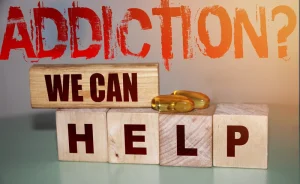
Unfortunately, a single lapse can cause you to fall into a full relapse because of something called the abstinence violation effect (AVE). It is not necessarily a failure of self-control nor a permanent failure to abstain from using a substance of abuse. Those in addiction treatment or contemplating treatment can benefit from this aspect of relapse prevention. As the foregoing review suggests, validation of the reformulated RP model will likely progress slowly at first because researchers are only beginning to evaluate dynamic relapse processes. Currently, the dynamic model can be viewed as a hypothetical, theory-driven framework that awaits empirical evaluation. Testing the model’s components will require that researchers avail themselves of innovative assessment techniques (such as EMA) and pursue cross-disciplinary collaboration in order to integrate appropriate statistical methods.
1. Review aims
Participants with controlled use goals in this center are typically able to achieve less problematic (38%) or non-problematic (32%) use, while a minority achieve abstinence with (8%) or without (6%) incidental relapse (outcomes were not separately assessed for those with AUD vs. DUD; Schippers & Nelissen, 2006). A focus on abstinence is pervasive in SUD treatment, defining success in both research and practice, and punitive measures are often imposed on those who do not abstain. Most adults with SUD do not seek treatment because they do not wish to stop using substances, though many also recognize a need for help. This narrative review considers the need for increased research attention on nonabstinence psychosocial treatment of SUD – especially drug use disorders – as a potential way to engage and retain more people in treatment, to engage people in treatment earlier, and to improve treatment effectiveness. Despite significant empirical support for nonabstinence alcohol interventions, there is a clear gap in research examining nonabstinence psychosocial treatment for drug use disorders. Future research must test the effectiveness of nonabstinence treatments for drug use and address barriers to implementation.
Overview of the RP Model
The present review instead focuses on short-term abstinence (hereafter termed ‘abstinence’ unless otherwise specified). Short-term abstinence, for the purposes of the present review, refers to two kinds of abstinence periods. The first refers to the first 4 weeks of a non-temporary, indefinite abstinence period (i.e., a genuine cessation attempt). This may be regarded as ‘short-term’ because while participants are intending to quit the behavior abstinence violation effect completely, the focus here is on the experience of early abstinence. A 4-week period was chosen on the basis that the time course of acute withdrawal symptoms for substance addictions generally does not last beyond this period (Hughes, Higgins, & Bickel, 1994). Consequently, it can be reasonably extrapolated that acute withdrawal symptoms for behavioral addictions (if any do manifest) would also not persist beyond a 4-week period.

What does cue-reactivity have to offer clinical research?
Moreover, these people often have positive expectations regarding the effects of alcohol (i.e., outcome expectancies). These factors can lead to initial alcohol use (i.e., a lapse), which can induce an abstinence violation effect that, in turn, influences the risk of progressing to a full relapse. Self-monitoring, behavior assessment, analyses of relapse fantasies, and descriptions of past relapses can help identify a person’s high-risk situations. Shaded boxes indicate steps in the relapse process and intervention measures that are specific to each client and his or her ability to cope with alcohol-related situations. White boxes indicate steps in the relapse process and intervention strategies that are related to the client’s general lifestyle and coping skills.

- RP strategies can now be disseminated using simple but effective methods; for instance, mail-delivered RP booklets are shown to reduce smoking relapse [135,136].
- Overall, many basic tenets of the RP model have received support and findings regarding its clinical effectiveness have generally been supportive.
- These findings may be informative for researchers who wish to incorporate genetic variables in future studies of relapse and relapse prevention.
- The limit violation effect describes what happens when these individuals fail to restrict their use within their predetermined limits and the subsequent effects of this failure.
Towards DSM-V: Considering other withdrawal-like symptoms of pathological gambling disorder
Empirical findings relevant to the RP model

Relapse Prevention And Ongoing Treatment At Bedrock












Recent Comments